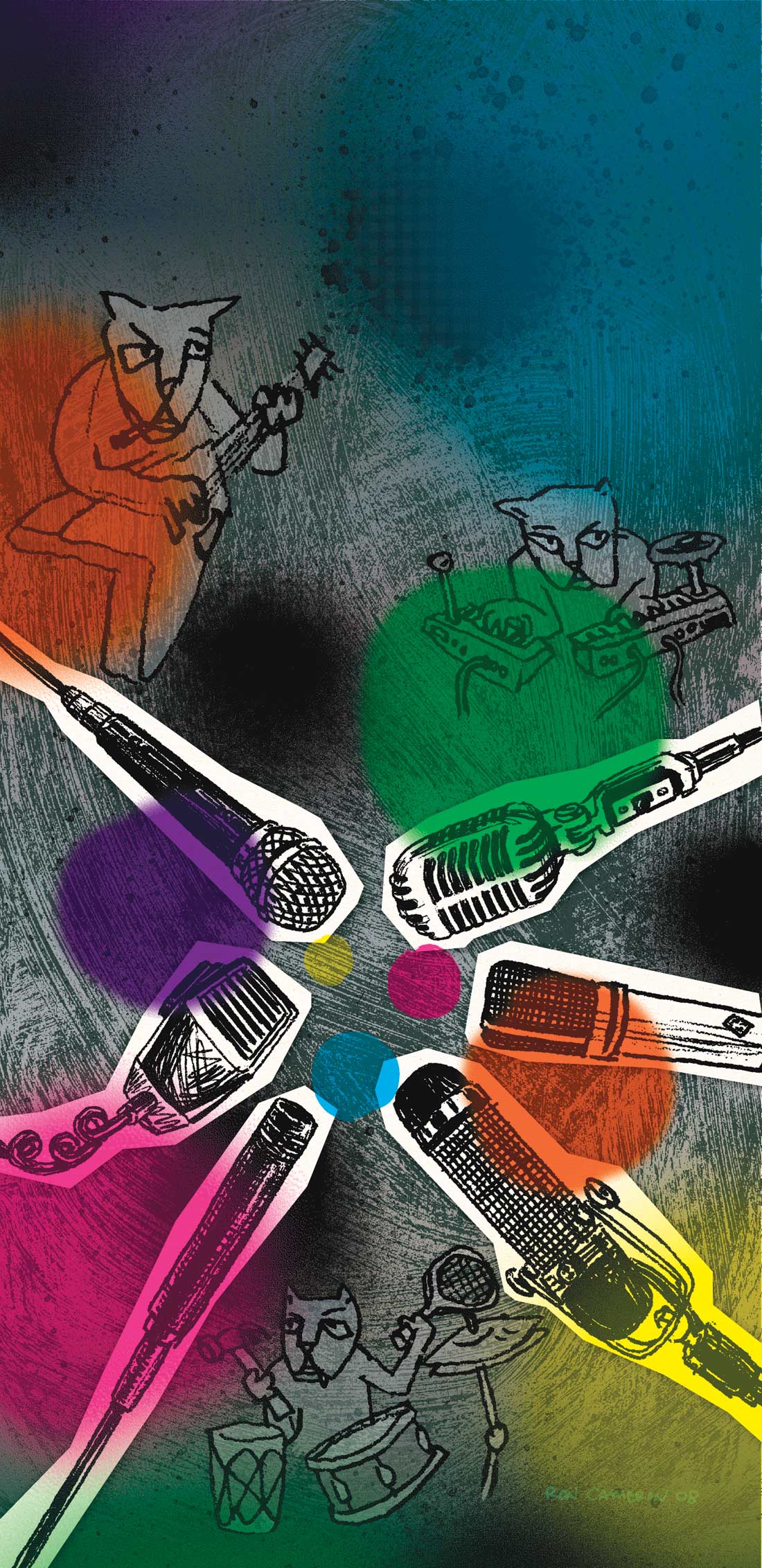Here at Tape Op World Headquarters we get numerous emails from folks fighting the good fight against the threat to our world known as digital recording. All of the hideous doors that have opened since the onset of this digital audio plague have turned what was once a noble and proud profession into a travesty of the highest order. Albums and singles are released every day; full of over-compressed, over-tuned, over-EQ'd, and underplayed grid-sequenced crap. Obviously no music created using these "tricks of the devil" could be interesting, enjoyable, danceable or even remotely listenable. We feel that the time has come to issue our plea for a set of rules, a new set of standards if you will, for the recording arts; as well as a proposed "endorsement" solution for the travesties inflicted by these many soulless, careless and immoral engineers around the world. These rules shall apply to any and all tape-based or digital-only sessions.
Live Tracking: All sessions must be tracked as live as possible with real musicians and instruments. Imagine how much better Britney Spears would sound if she recorded in this manner!
Click Tracks: Metronomes may only be used at the start of a song. Any indication that a song was played entirely to a click, or that one was used to keep the band in time after the third bridge, will not be tolerated.
Editing: Only one edit of the master take of each song is allowed. In other words, two takes may be combined, but no more than one edit/splice point.
Punch Ins: One punch in per track is permissible on each song. Continuous takes, mistakes and all, always have greater feel than multiple punched in Frankenstein'ed takes.
Overdubs: Since an overdub is not part of the all-important live performance, the number of overdubs per song shall be limited to four. However, any overdubbing of lead vocals must be notated in the liner notes of any release and on the back cover in at least 10 point type. Remember: Coltrane didn't need no stinkin' overdubs.
Compression: No ratios over 10:1. Not even in parallel mode.
Equalization: No boosts of frequencies. Not even on a Pultec. Cutting frequencies is okay, but only up to -4dB. Remember, it's called corrective equalization for a reason.
Plug-Ins: None will be allowed. Ever. They are "fake" tools. They invariably emulate something that exists in the real world, but obviously in an inferior manner. If the Beatles had plug-ins they might have used them, but we can rest assured that their records would have sounded far worse for it.
Artificial Tuning: This modern travesty of the recording arts is never allowed. If two notes are rubbing together in a bad way then the world shall hear it as intended — or the performance must be redone.
Track Nudging: Anyone caught moving a snare hit, bass line, backing vocal, tambourine hit or such will be removed from our program with no refund or recourse.
Track Count: No more than 24 tracks may be used per song, no matter what device you are recording to, unless you have an Otari 32-track analog tape deck. Any records created on 4-track machines will be given special merit and a mention in our new monthly journal, Purity and Honesty in Recordings.
Mixing in the Box: This is never allowed. In fact, studies are being performed (by us) suggesting that simply monitoring mixes with digital summing while tracking or overdubbing can cause improper production decisions and induce ear fatigue.
Mixing Automation: A total of two automation moves per track on any given song will be allowed. Any more moves indicates that the recording process was obviously flawed and will not be permitted.
Computer Monitors: When using a DAW (or even console automation), computer monitors may not be on for more than 50% of the recording and mixing time. The same applies to any and all control surfaces and/or track balls.
Mastering: All mastering must be done in real time as the master tape passes the headstack. All EQ and compression changes must be performed by hand without automations. Anything resembling brick-wall limiting will be disqualified.
Delivery Format: Any recording project turned in on anything other than 1/2" or 1/4" analog tape will be automatically disqualified from our endorsement. We're currently investigating whether wire recorder mixdowns will qualify.
Solution: We have decided to implement a certification system so that music buyers shall be able to identify music that was recorded to our rigorous standards. For a $5000 annual fee recording studios, engineers, producers and home recordists can sign up for the "Tape Op Purity and Honesty" certification program. Our handpicked panel of experts will review any recording sent in (on a high end audiophile stereo, of course) and will evaluate whether any violations of the Purity and Honesty rules have occurred. These experts will be selected for their ability to perceive impure and dishonest recording techniques in the final master. An official logo will be issued for the album artwork if we determine that all of the proper steps have been taken to ensure that the music to be released was recorded properly, purely and honestly. With this program we hope to restore some much-needed integrity to the once noble profession of audio recording.
www.tapeop.com/honestrecordings

